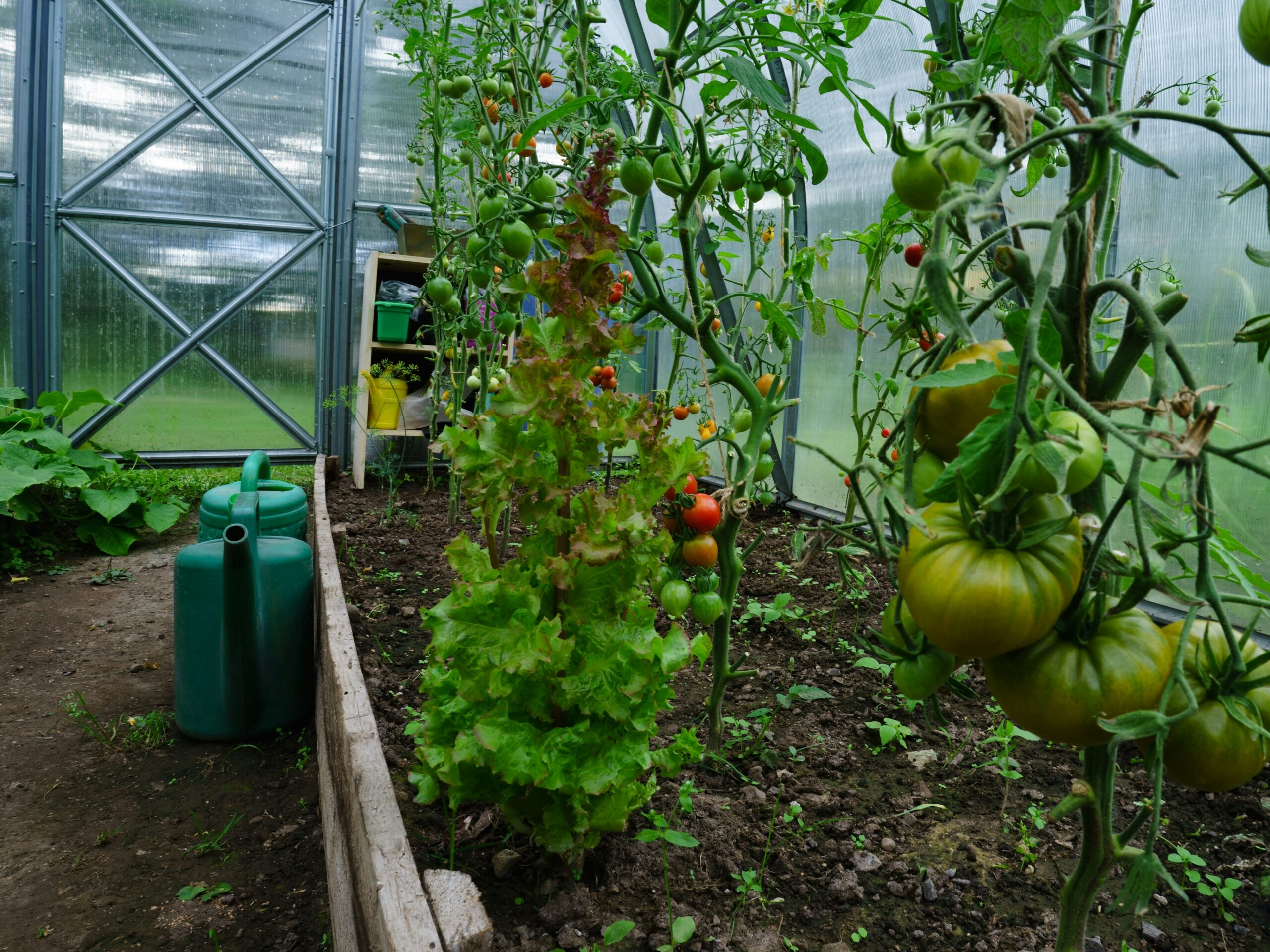Sustainable Living: 5 Simple Habits to Lower Your CO₂ Emissions

Sustainable living isn’t just a buzzword—it’s a practical, empowering way to make a real difference for our planet and future generations. If you’re looking to lower your CO₂ emissions, you don’t need to overhaul your entire lifestyle overnight. Instead, start with a few simple, impactful habits that fit naturally into your daily routine. In this guide, we’ll explore five easy-to-adopt habits focused on diet, transportation, home energy, and digital habits. Each one is action-oriented, beginner-friendly, and proven to help you live more sustainably.
Looking for ways to live sustainably this year? This pillar guide will help you lower your CO₂ emissions step by step, starting with simple habits you can adopt today.
Table of Contents
Why Focus on Lowering CO₂ Emissions?
Lowering CO₂ emissions is at the heart of sustainable living because CO₂ emissions are the leading cause of global warming and climate change. Every action we take in our daily lives—whether it’s our food choices, how we travel, or how we use energy at home—can either increase or lower CO₂ emissions. By focusing on lowering CO₂ emissions, we directly contribute to a healthier planet and a more sustainable future.
Sustainable living means making conscious choices that consistently lower CO₂ emissions, not just occasionally but as part of our everyday routines. When you commit to lowering CO₂ emissions, you’re not only helping to slow climate change but also creating a positive impact on your community and your family’s well-being. Sustainable living and lowering CO₂ emissions go hand in hand: the more we integrate habits that lower CO₂ emissions into our lives, the greater our collective impact will be. Embracing sustainable living by lowering CO₂ emissions also often leads to cost savings, improved health, and a stronger sense of purpose as you see the real-world benefits of your efforts.

1. Eat for a Cooler Planet: Lower Your CO₂ Emissions with Food
Food is a daily necessity, but it’s also a major source of greenhouse gas emissions. The way we eat—from what we buy to how we cook and dispose of leftovers—matters more than most people realize.
Choose More Plant-Based Meals
The production of animal-based foods, especially beef and lamb, generates far more CO₂ than plant-based foods. Livestock farming requires large amounts of land, water, and feed, and produces methane—a greenhouse gas much more potent than CO₂. By shifting toward a diet rich in vegetables, fruits, grains, and legumes, you can dramatically lower your food-related emissions.
- Action Step: Try “Meatless Mondays” or set a goal to eat plant-based for at least one meal per day.
- Impact: Studies show that adopting a vegetarian or vegan diet can reduce your food-related carbon footprint by up to 50%.
Buy Local and Seasonal Produce
Food that travels long distances by plane, ship, or truck racks up “food miles,” increasing its carbon footprint. Local, seasonal produce is fresher, supports your community, and requires less energy for transportation and storage.
- Action Step: Visit a local farmers’ market or join a community-supported agriculture (CSA) program.
- Tip: Look for produce that’s in season to get the best flavor and lowest emissions.
Reduce Food Waste
Globally, about one-third of all food produced is wasted. When food is thrown away, all the resources used to produce it—land, water, energy—are wasted too, and rotting food in landfills releases methane.
- Action Step: Plan meals, store leftovers, and compost food scraps to minimize waste.
- Product Suggestion: Use a countertop compost bin to make composting easy and odor-free.
Eco-Friendly Product Mention
- Reusable produce bags: Cut down on single-use plastics with washable mesh produce bags.
- Compostable food storage: Try beeswax wraps or compostable containers for leftovers.
2. Rethink Your Ride: Eco-Friendly Ways to Lower CO₂ Emissions
Transportation is one of the largest contributors to household CO₂ emissions, especially if you rely on driving or flying. The good news? There are many ways to get around that are better for the environment and your health.
Walk, Bike, or Use Public Transport
Short trips are often the most polluting, especially when driving alone. Walking or biking produces zero emissions and offers health benefits, while public transport and carpooling reduce the number of vehicles on the road.
- Action Step: Replace one car trip per week with walking, biking, or public transit.
- Impact: Cycling or walking for short trips can reduce your transportation emissions by up to 20% per year.
Carpool or Rideshare
Sharing rides with others means fewer cars on the road, less congestion, and lower emissions per person.
- Action Step: Set up a carpool with coworkers, neighbors, or school families.
Switch to Electric or Hybrid Vehicles
If you need to drive regularly, consider switching to an electric vehicle (EV) or hybrid. These cars produce fewer emissions over their lifetime, especially if charged with renewable energy.
- Action Step: Research local incentives for EVs or hybrids, and consider making the switch when it’s time to replace your car.
- Product Suggestion: Look for home EV chargers that can be powered by solar panels.
Fly Less and Offset When You Must
Air travel has a high carbon footprint, especially for long-haul flights. If possible, choose trains or buses for regional trips. When flying is unavoidable, consider offsetting your emissions through reputable carbon offset programs.
- Action Step: Plan vacations closer to home and choose direct flights to minimize emissions.
- Tip: Pack light—less weight means less fuel burned.
Eco-Friendly Product Mention
- Bike accessories: Invest in a reliable bike lock, helmet, and panniers for errands.
- Transit apps: Use apps to plan efficient routes and track public transport in real time.
3. How to Make Your Home More Energy Efficient
Home energy use—heating, cooling, lighting, and appliances—is a major source of CO₂ emissions for most families. Making your home more energy-efficient is one of the most effective ways to lower your carbon footprint and save money.
Switch to LED Lighting
LED bulbs use up to 85% less energy than traditional incandescent bulbs and last much longer.
- Action Step: Replace your five most-used light bulbs with ENERGY STAR®-rated LEDs.
- Impact: An average household can save $225 per year in energy costs by making this switch.
Install a Smart Thermostat
Smart thermostats learn your schedule and adjust heating and cooling for maximum efficiency, reducing wasted energy.
- Action Step: Install a smart thermostat and set it to lower temperatures at night or when you’re away.
- Product Suggestion: Google Nest or ecobee smart thermostats.
Upgrade Appliances
Old appliances consume more energy than modern, efficient models. Look for ENERGY STAR® certification when it’s time to upgrade.
- Action Step: Replace your refrigerator, washing machine, or dishwasher with energy-efficient models as they wear out.
Insulate and Seal Your Home
Proper insulation and sealing keep your home comfortable year-round and reduce the need for heating and cooling.
- Action Step: Check for drafts around windows and doors and seal them with weatherstripping or caulk.
- Product Suggestion: Eco-friendly insulation materials like cellulose or sheep’s wool.
Use Renewable Energy
If possible, switch to a green energy provider or install solar panels. Many utilities now offer renewable energy plans, and solar panels are more affordable than ever.
- Action Step: Contact your utility to ask about green energy options or get a quote for solar installation.
- Tip: Community solar programs can be a great option for renters.
Eco-Friendly Product Mention
- Smart power strips: These cut off power to devices not in use, reducing “phantom load.”
- Programmable thermostats: Make it easy to automate energy savings.
4. Lower Your Digital Carbon Footprint
It’s easy to forget that our digital habits—streaming, cloud storage, and device use—also have a carbon footprint. Data centers and networks that power the internet use vast amounts of electricity, much of it from fossil fuels.
Stream Smarter
Streaming video is energy-intensive, especially in high definition. Watching on smaller screens or downloading content for offline viewing can reduce energy use.
- Action Step: Lower video resolution when streaming on mobile devices and turn off autoplay features.
- Tip: Download music and podcasts for offline listening instead of streaming repeatedly.
Unplug and Power Down Devices
Many electronics draw power even when not in use. Unplugging chargers and turning off devices can make a noticeable difference.
- Action Step: Use smart power strips or unplug devices when not in use.
- Impact: Phantom energy can account for up to 10% of household electricity use.
Choose Green Web Services
Some cloud storage and web hosting companies use renewable energy to power their servers.
- Action Step: Switch to green web services for email, cloud storage, and website hosting.
- Product Suggestion: Look for companies certified by the Green Web Foundation.
Extend Device Lifespan
Manufacturing new electronics is resource-intensive. Using your devices longer, repairing instead of replacing, and recycling responsibly all help lower emissions.
- Action Step: Keep your phone, laptop, or tablet for as long as possible, and recycle old devices at certified e-waste centers.
Eco-Friendly Product Mention
- Solar-powered chargers: Great for phones and tablets, especially when traveling.
- Refurbished electronics: Buying certified refurbished devices reduces demand for new products.
5. Everyday Sustainable Habits to Lower CO₂
Lasting change comes from building habits that stick. Here’s how to make sustainable living second nature for you and your family.
Set Achievable Goals
Start small and build momentum. Pick one habit to focus on each month, such as reducing meat consumption or biking to work once a week.
Involve the Whole Family
Sustainable living is more fun and effective when everyone participates. Make it a game to see who can take the shortest shower, recycle the most, or come up with creative ways to reuse items.
Track Your Progress
Use apps or journals to track energy use, food waste, or miles biked instead of driven. Celebrate milestones and reward yourselves for progress.
Share and Inspire
Talk about your journey with friends, neighbors, and coworkers. Share tips, swap recipes, or organize a neighborhood clean-up. The more people who join in, the bigger the impact.
Eco-Friendly Product Mention
- Reusable water bottles and coffee cups: Cut down on single-use plastics.
- Compost bins: Make it easy to turn food scraps into garden gold.
- Reusable shopping bags: Keep them by the door or in your car for easy access.
Conclusion: Every Habit Counts
Sustainable living is a journey built on daily choices that focus on lowering CO₂ emissions. By adopting these five simple habits—eating more plant-based meals, choosing greener transportation, improving home energy efficiency, making your digital habits more sustainable, and building eco-friendly routines—you make lowering CO₂ emissions a natural part of your life.
Sustainable living and lowering CO₂ emissions are deeply connected: every step you take to lower CO₂ emissions not only benefits the environment but also saves money and inspires others. Remember, each action to lower CO₂ emissions, no matter how small, is a meaningful step toward a sustainable living future for everyone. Start today, embrace sustainable living, and make lowering CO₂ emissions a lasting part of your family’s lifestyle.
Ready to take the next step? Use a carbon footprint calculator to see your progress and discover more ways to live sustainably. The journey to a greener, more sustainable life starts with a single habit. Why not start today?
Frequently Asked Questions
- Q: What is the biggest contributor to CO₂ emissions at home?
A: For most households, heating and cooling are the top sources of emissions, followed by driving and food waste. - Q: What are the easiest habits to start lowering CO₂ emissions fast?
A: Eat more plant-based meals, cut down short car trips, switch to LED lights, and unplug devices when not in use.
References
- https://ecobnb.com/blog/2024/02/reduce-your-carbon-footprint/
- https://greenerinsights.com/sustainable-living-practical-actions-save-money/
- https://grabenord.com/blogs/blog/eco-friendly-living-how-to-reduce-your-carbon-footprint
- https://biofriendlyplanet.com/energy-saving-habits-100-top-sustainability-tips-for-greener-living-in-2025/
- https://skoot.eco/articles/carbon-footprint-of-everyday-things
- https://www.cbs.de/en/blog/sustainable-living-tips-for-a-more-sustainable-lifestyle
Inspired by these five habits? See their effect with our fast carbon calculator. You can also bust common offsetting myths in 7 Myths About Carbon Offsetting Debunked and explore broader tips in our Carbon Learning Center.